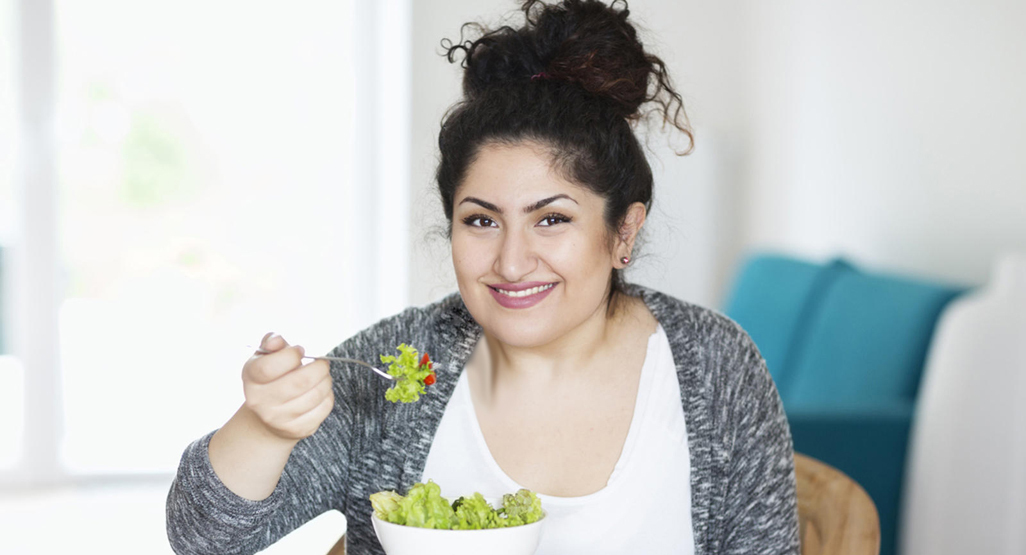
Diabetes patients can choose from a variety of foods. Controlling blood sugar levels requires a balanced diet. Legumes are high in protein, fiber, and high-quality carbohydrates. Soluble fiber helps stabilize blood sugar levels and curbs hunger. Recent studies showed that legumes had a lower risk of type 2 diabetes and improved blood sugar control.
As a low-carb food, avocados are a great choice for diabetics. Avocados contain healthy amounts of fiber as well as healthy fats. Walnuts are a great choice for diabetics as they have high levels of omega-3s. It is important that you only consume one serving of walnuts. Chickpeas, which is a legume rich both in fiber and protein, can also be eaten. They are a good source of protein and are a low-carb snack, as they contain a large amount of dietary fibre.
While spinach is not a favorite, most people do not like the taste of pumpkin. However, beta-carotene can convert to essential vitamin B and be used as a main meal. You can eat the skin if you are unable to eat them. They can be cooked and used as a part of a dish. For extra protein, mix some quinoa in your favorite soups or smoothies.

Greek yogurt is also suitable for diabetics. It is safe to eat a small amount of this starchy vegetable, which is between six and eight grams. Some brands may contain added sugar so make sure you read the label. The yogurt can be enjoyed with fruit, such as berries and cherries. Flax seeds have lignans that help to improve insulin sensitivity, and decrease the risk of heart disease.
In addition to lean protein, sweet potatoes are also high in fiber and potassium. They can be cooked and eaten as a snack. Sweet potatoes can be cooked and eaten as a snack, but they are high carbohydrate. They are also an excellent source of magnesium, which helps lower your risk of stroke and lowers your risk of developing diabetes. These are why they are considered the best foods to eat for diabetics.
A variety of fruits and vegetables are high in antioxidants and are a good source of fiber. These fruits can be used in smoothies and salads, and they have a low glycemicindex. In addition to berries, you can also use Greek yogurt for salads and yogurts. These can be added to any yogurt you prefer. These can be used in smoothies. These can be used to enhance the flavor of desserts when you prepare fruit salads.
Diabetic diets have to be balanced. Diabetic diets should contain low levels of sugar but high amounts of saturated fats and trans fats. They should be rich sources of fiber, protein, as well as fiber. A diabetic diet should be based on fruits and vegetables as well as whole grains. Healthy fats are also important. These foods provide many health benefits.

A healthy diet for diabetics includes plenty of fruits and vegetables. Organic, fresh, and ripe fruit and vegetables are the best. Low-calorie foods should be considered the best food for diabetics. There are many ways to incorporate fruits and vegetables into your daily routine. For example, you can eat nuts every day. These delicious foods can be healthy for diabetics. Be careful with your sugar intake to avoid diabetes.
Greek yogurt is another healthy option for diabetics. It is high in fiber and low in carbohydrates. It can be eaten either as a snack and as a dish. You can also include whole grains. They are low in calories and high in fiber. Because they are low in sugar, whole-grain breads can be the best food for diabetics. These breads as well as pastas are a great source of fiber.
FAQ
What are 10 healthy lifestyle habits?
-
Eat breakfast every day.
-
Don't skip meals.
-
Be balanced.
-
Drink plenty of water
-
Take care to your body.
-
Get enough sleep.
-
Stay away from junk foods.
-
Get at least one form of exercise each day.
-
Have fun!
-
Find new friends
What is the difference between a virus and a bacterium?
A virus, a microscopic organism, is incapable of reproducing outside its host cell. A bacterium (or single-celled organism) reproduces by splitting itself into two. Viruses can be as small as 20 nanometers, while bacteria can grow up to 1 micron.
Viruses are spread via contact with infected bodily liquids such as urine, saliva, semen and vaginal secretions. Bacteria can easily be spread from direct contact to contaminated surfaces and objects.
Viruses can get into our bodies through cuts and scrapes on the skin, bites, and other injuries. They can also penetrate the skin through the eyes, nose or mouth.
Bacteria can get into our bodies through cuts, scrapes and burns, insect bites, or other skin breaks. They can also enter our bodies from food, water, soil, dust, and animals.
Both viruses and bacteria can cause illness. Viruses cannot multiply in their host cells. They only cause disease when they infect living tissue.
Bacteria can multiply within their hosts and cause illness. They can also invade other parts of your body. That's why we need antibiotics to kill them.
What is the problem with BMI?
BMI is the acronym for Body Mass Index. It measures body fat based upon height and weight. The following formula can be used to calculate BMI.
Weight in kilograms divided with height in meters.
The result can be expressed as a number between zero and 25. A score greater than 18.5 is considered overweight. A score greater than 23 is considered obese.
A person of 100 kg with a height of 1.75m will have 22 BMI.
Do I need to count calories
You might wonder, "What's the best diet for me?" or "is counting calories necessary?" It depends on many factors such as your current health, personal goals, preferences, and overall lifestyle.
The Best Diet For Me: Which One Is Right?
The best diet depends on me, my health, my goals, my preferences and my overall lifestyle. There are many different diets, some good and some not so good. Some diets work for some people, while others are not. What can I do to make the right choice? How do I make a good decision?
This article aims at answering these questions. The article starts by introducing the many types of diets currently available. Next, we'll discuss the pros and cons for each type of diet. We'll then discuss how to choose which one is best for you.
To begin, let's take a quick look at the different types of diets.
Diet Types
There are three types of diets available: ketogenic, high-protein, and low fat. Let's briefly discuss them below.
Low Fat Diets
A low-fat diet restricts fat intake. This is achieved through reducing intakes of saturated fats (butter and cream cheese, for example). They are replaced by unsaturated fats such as avocados, olive oil, and cream cheese. Low fat diets are often recommended to those who wish to lose weight quickly. This diet can cause constipation, heartburn, and stomach problems. In addition, it may lead to vitamin deficiencies if a person doesn't get enough vitamins from their food.
High Protein Diets
High protein diets are known to restrict carbohydrate intake and promote the consumption of proteins. These diets typically have more protein than other diets. These diets can help increase muscle mass and decrease calories. The downside is that they may not provide adequate nutrition for someone who needs to eat regularly. They are also very restrictive, so they might not be appropriate for everyone.
Ketogenic Diets
Ketogenic diets are also known as keto diets. They are high fat and moderately carbohydrate and protein-rich. These are often used by bodybuilders and athletes because they allow them the ability to train harder and for longer periods of time without feeling tired. They do require strict compliance to avoid any side effects like fatigue, headaches, nausea, and headaches.
How can I live the best life possible every day?
To live a happy life, the first step is to discover what makes you happy. Once you are clear about what makes you happy and satisfied, you can move on to the next step. You can also ask other people what they do to live the best lives possible every day.
Dr. Wayne Dyer's book "How to Live Your Best Life" is also available. He talks about how to find happiness and fulfillment at all stages of our lives.
Statistics
- WHO recommends reducing saturated fats to less than 10% of total energy intake; reducing trans-fats to less than 1% of total energy intake; and replacing both saturated fats and trans-fats to unsaturated fats. (who.int)
- In both adults and children, the intake of free sugars should be reduced to less than 10% of total energy intake. (who.int)
- According to the Physical Activity Guidelines for Americans, we should strive for at least 150 minutes of moderate intensity activity each week (54Trusted Source Smoking, harmful use of drugs, and alcohol abuse can all seriously negatively affect your health. (healthline.com)
- The Dietary Guidelines for Americans recommend keeping added sugar intake below 10% of your daily calorie intake, while the World Health Organization recommends slashing added sugars to 5% or less of your daily calories for optimal health (59Trusted (healthline.com)
External Links
How To
27 Steps to achieve a healthy lifestyle when your family only buys junk food
The best way to eat healthily is to cook at your home. However, many people are not skilled in preparing healthy meals. This article will show you how to make healthier eating choices at restaurants.
-
Select restaurants that offer healthy dishes.
-
Before ordering meat dishes, order salads and other vegetables.
-
Ask for sauces made without sugar.
-
Avoid fried items
-
Choose grilled meats over fried.
-
Order dessert only if you absolutely need it.
-
You should always have something to eat after your dinner.
-
Always eat slowly and chew your food thoroughly.
-
When you eat, drink plenty of fluids.
-
Do not skip breakfast or lunch.
-
Fruits and vegetables are a great addition to every meal.
-
Use milk, not soda.
-
Try to avoid sugary drinks.
-
Reduce salt intake.
-
Try to limit the number of times you go to fast food restaurants.
-
If temptation is too strong for you, invite someone to be your friend.
-
Don't let your children watch too much TV.
-
Turn off the television during meals.
-
Drink no energy drinks
-
Take frequent breaks from your job.
-
Exercise early in the morning.
-
Do some exercise every day.
-
Start small and build up gradually.
-
Set realistic goals.
-
Be patient.
-
Find time to exercise even if you don't feel like it.
-
Positive thinking is important.